We offered prayer stations in the sanctuary for all ages and abilities to explore and engage with as they felt moved. Here are some photos from the night.
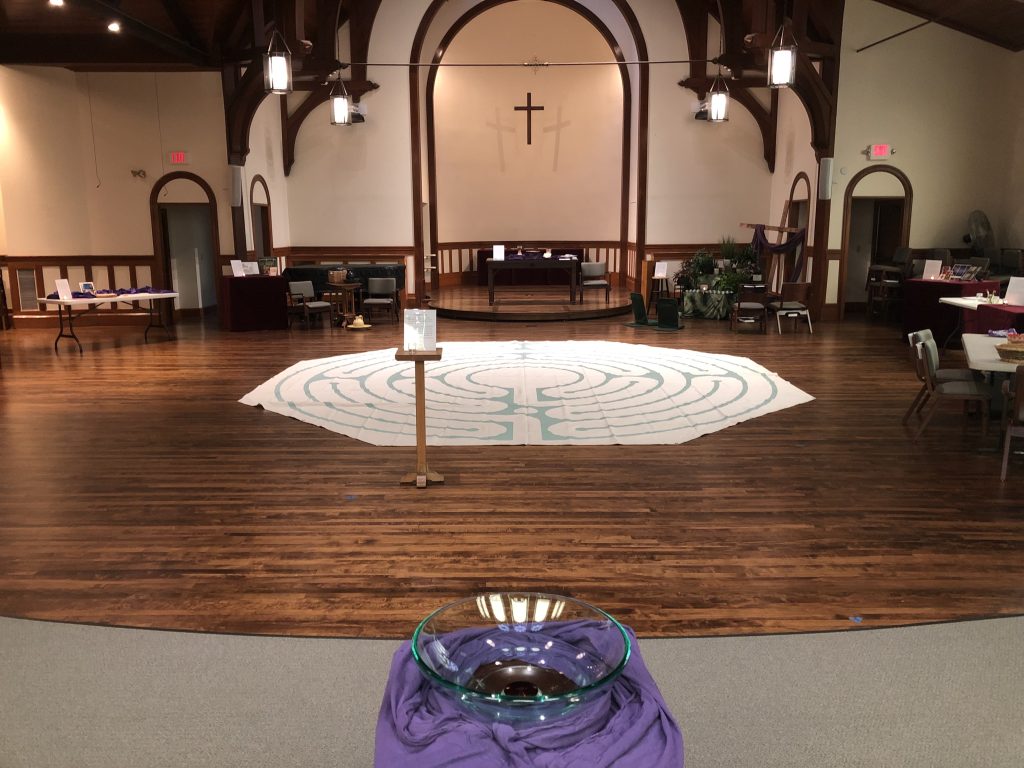
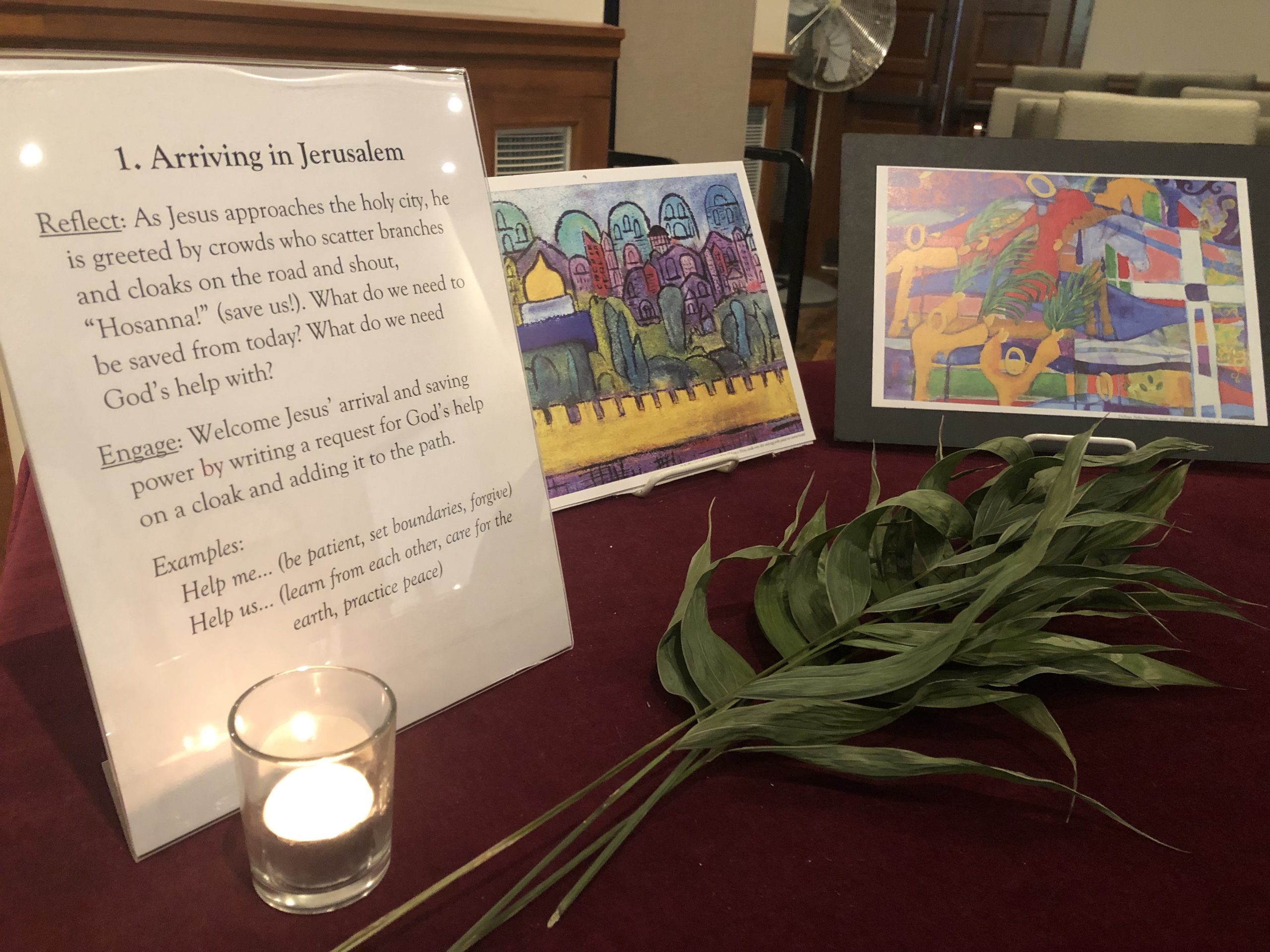
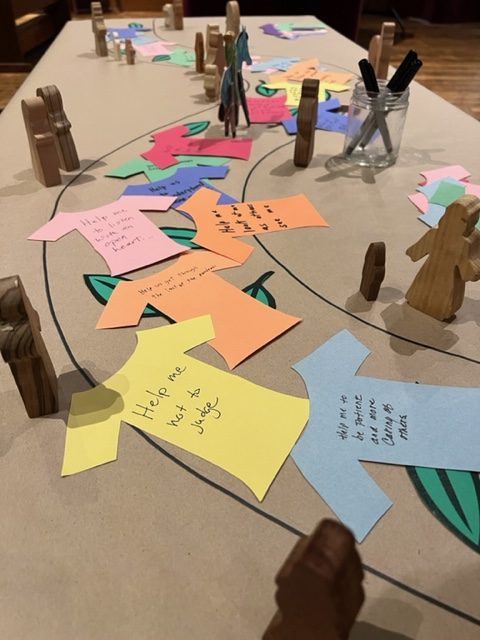
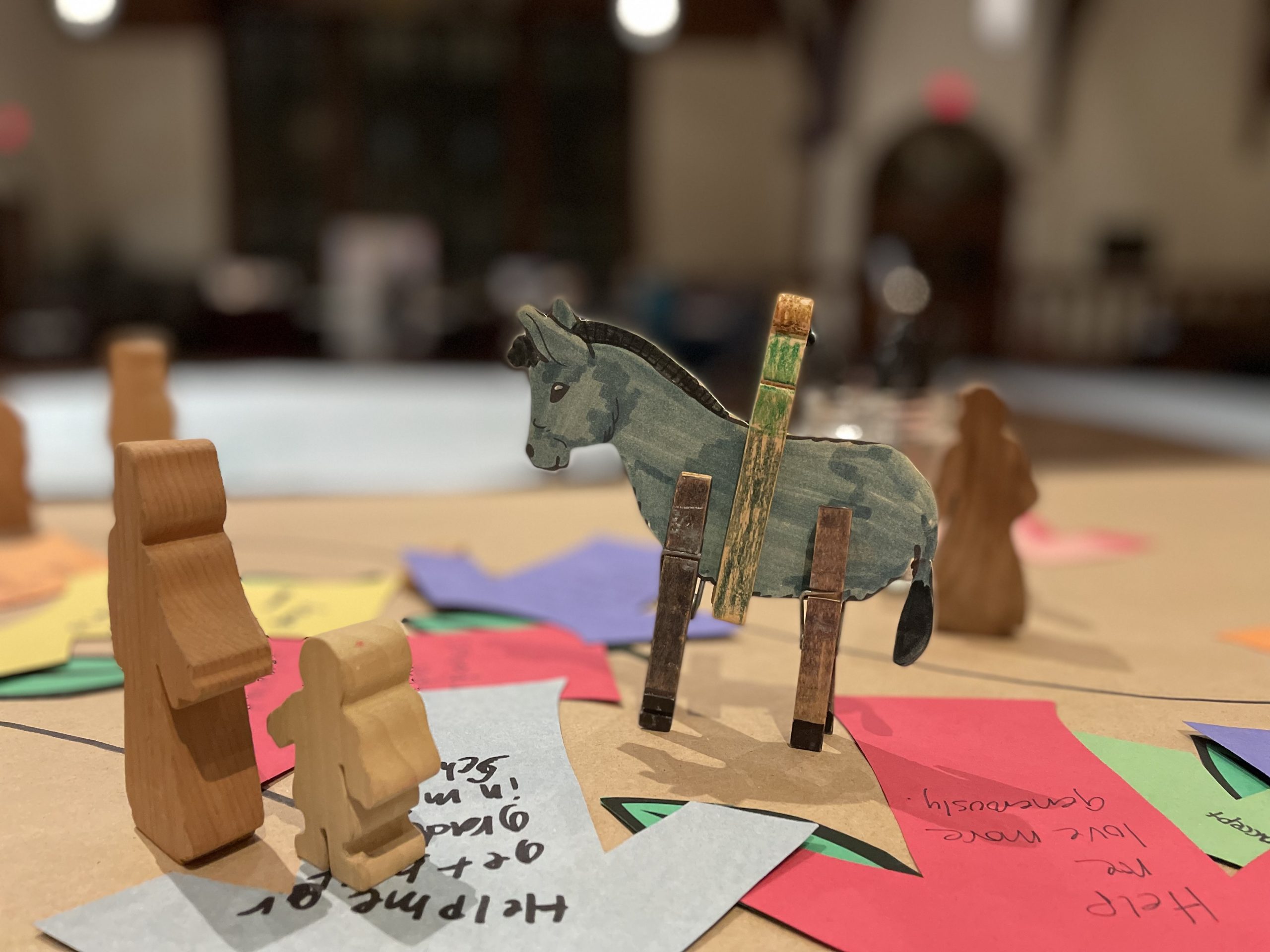
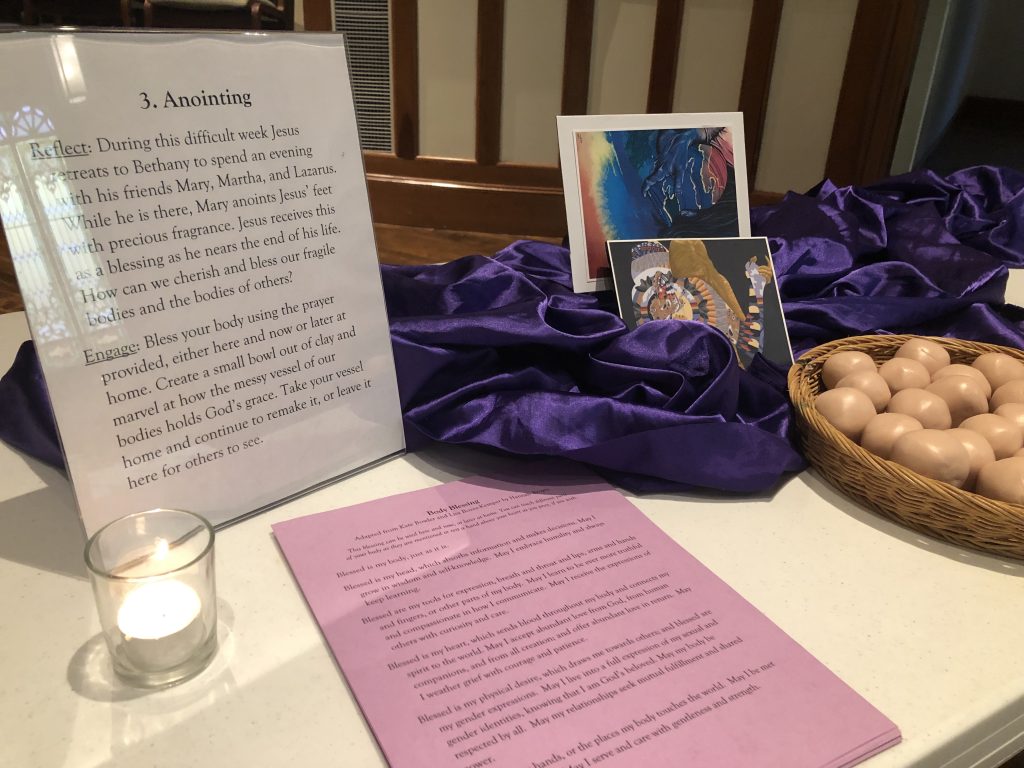
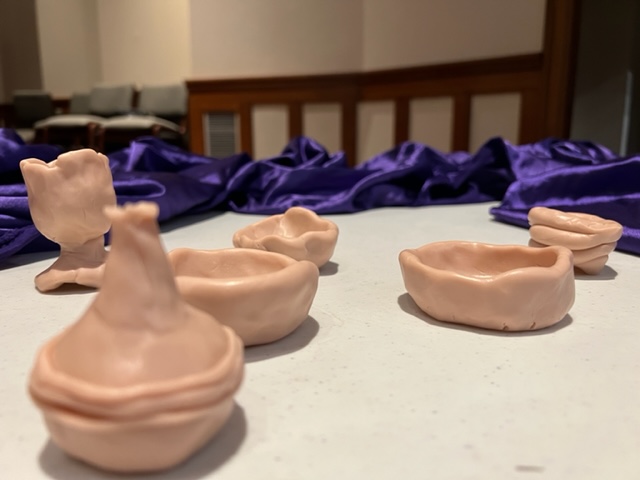
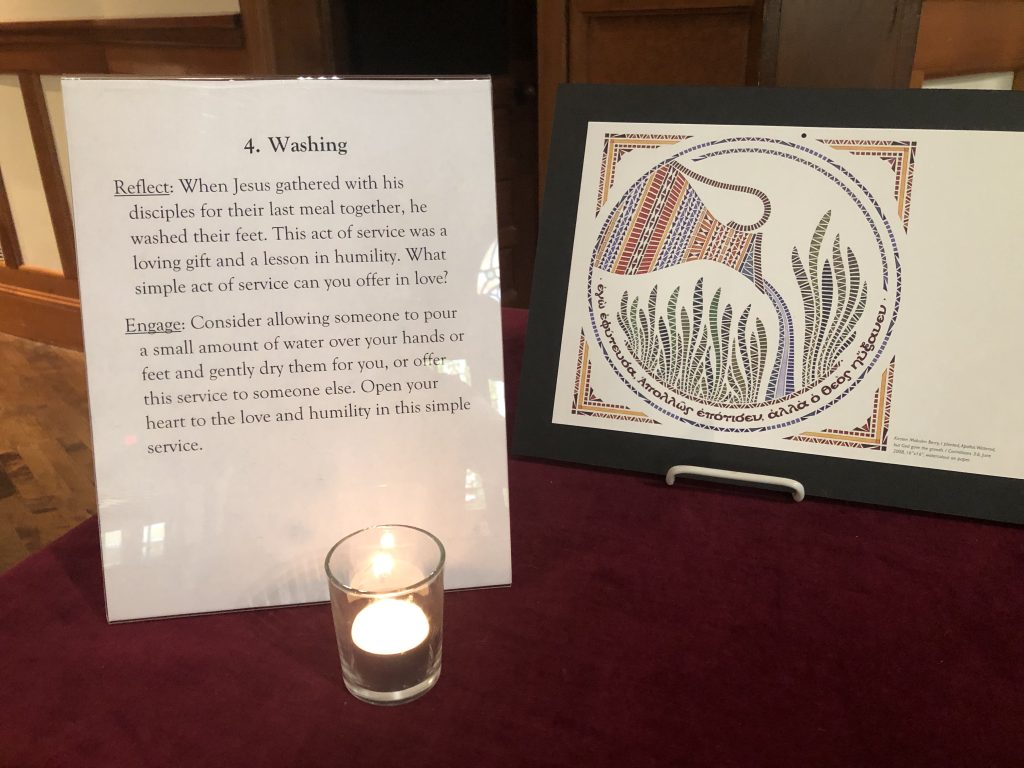
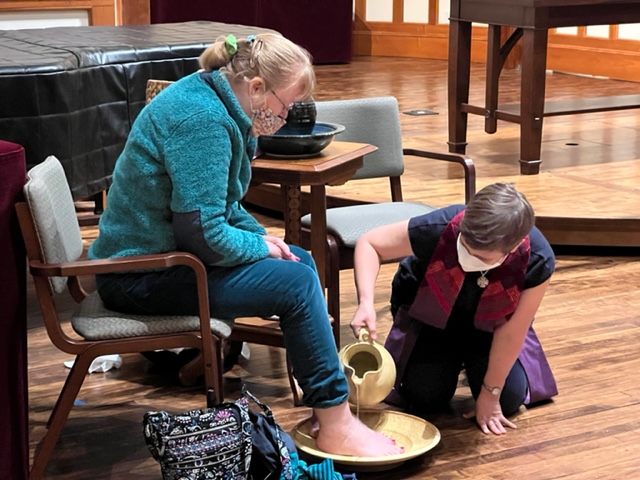
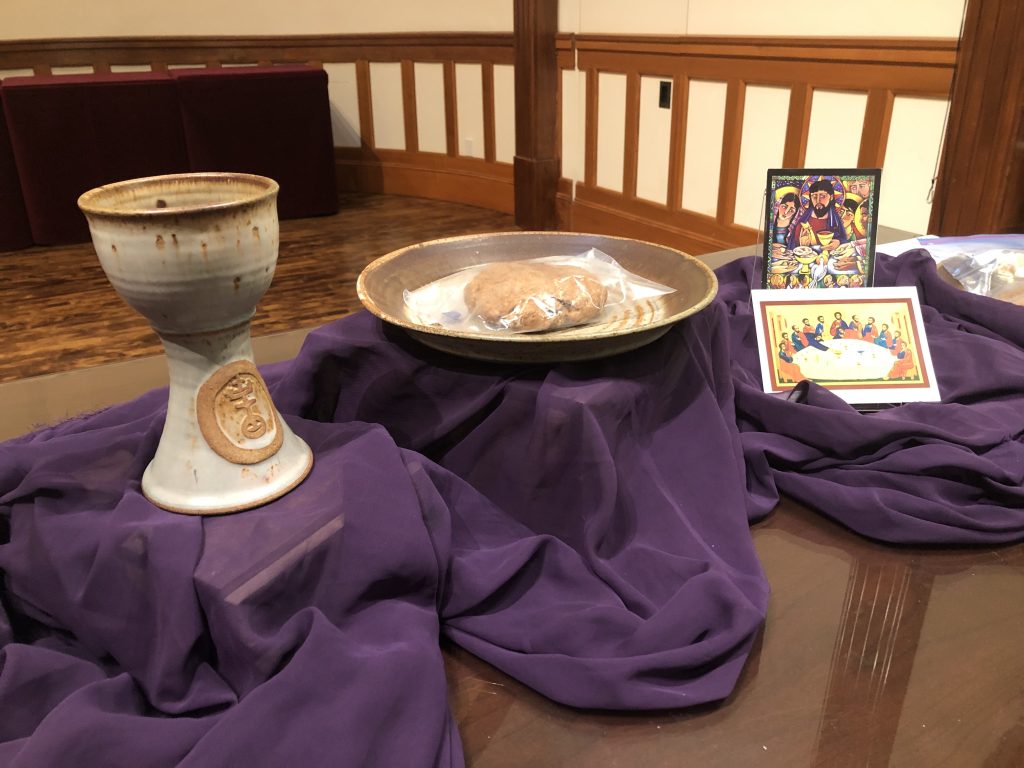
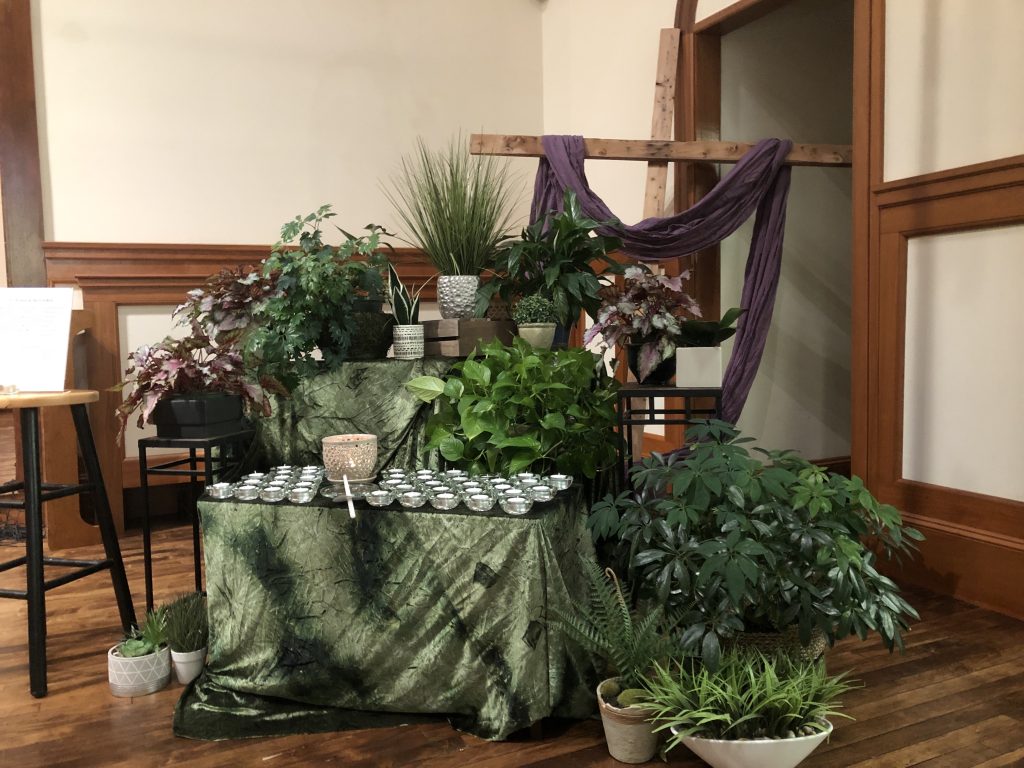

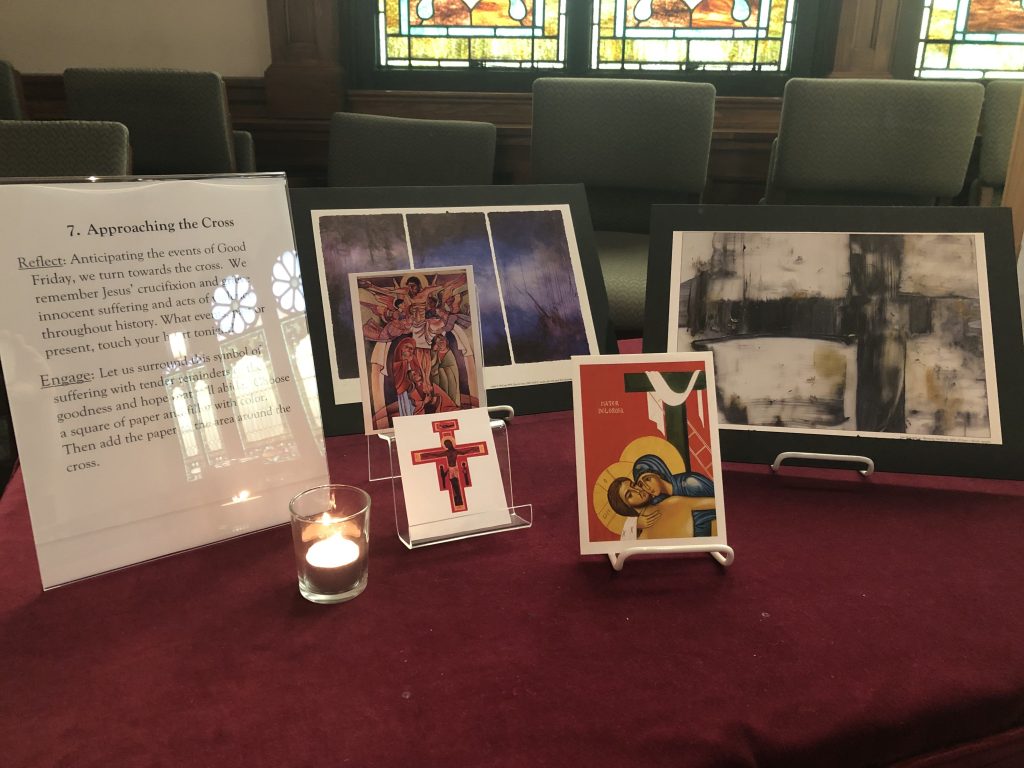
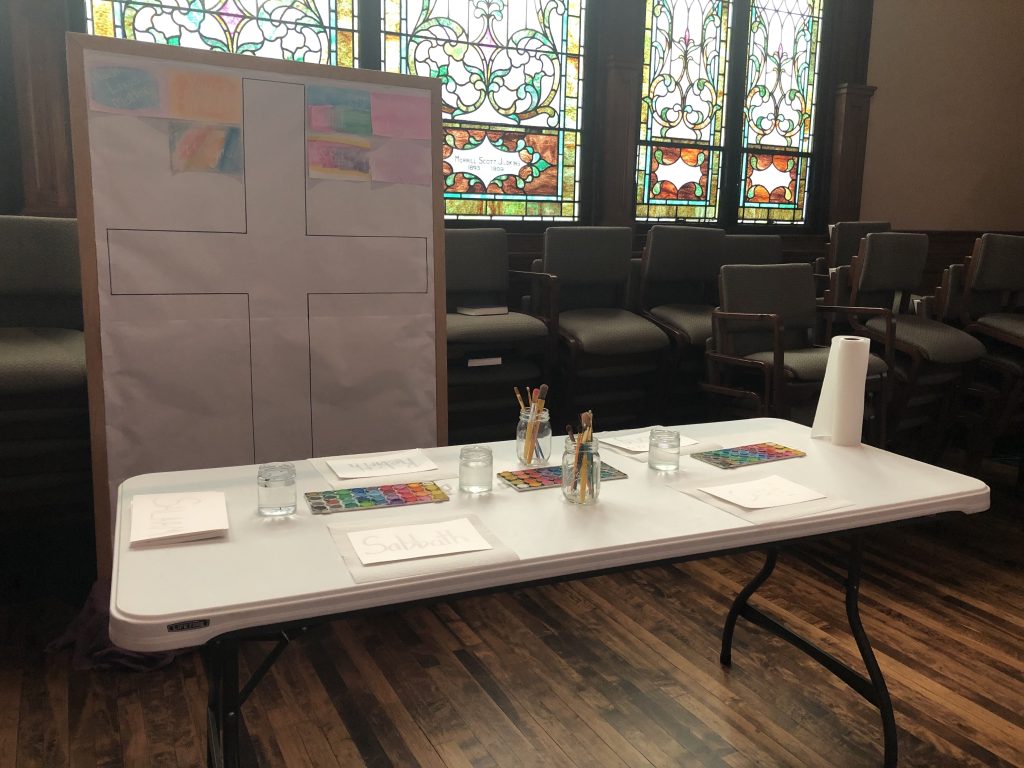
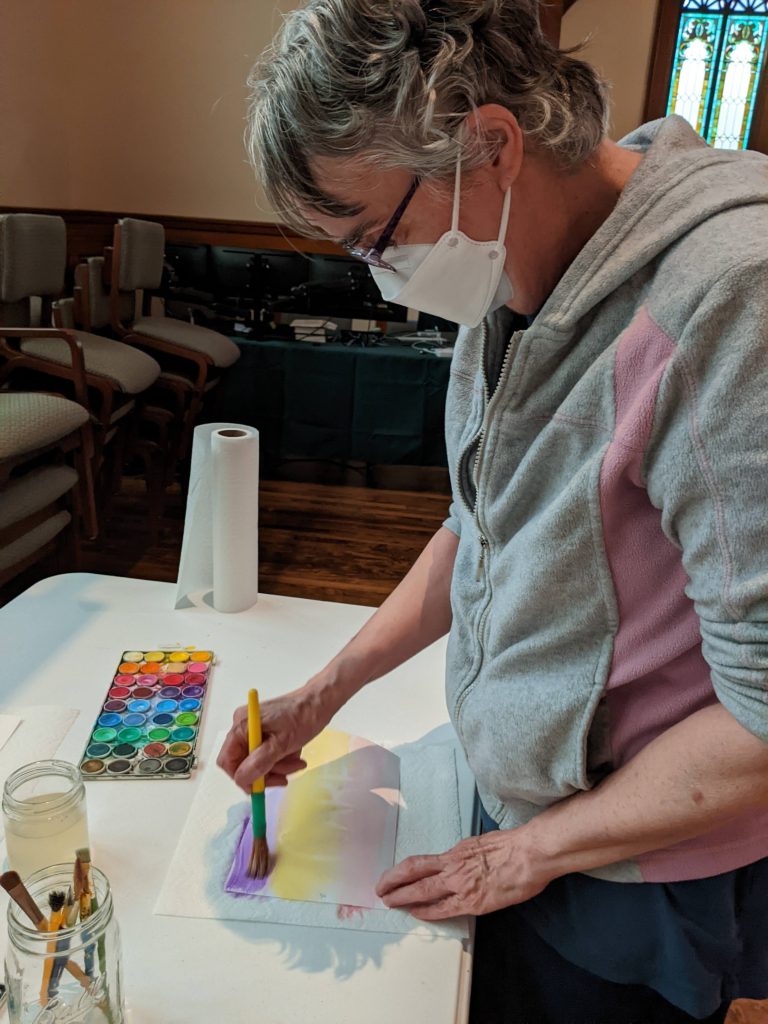
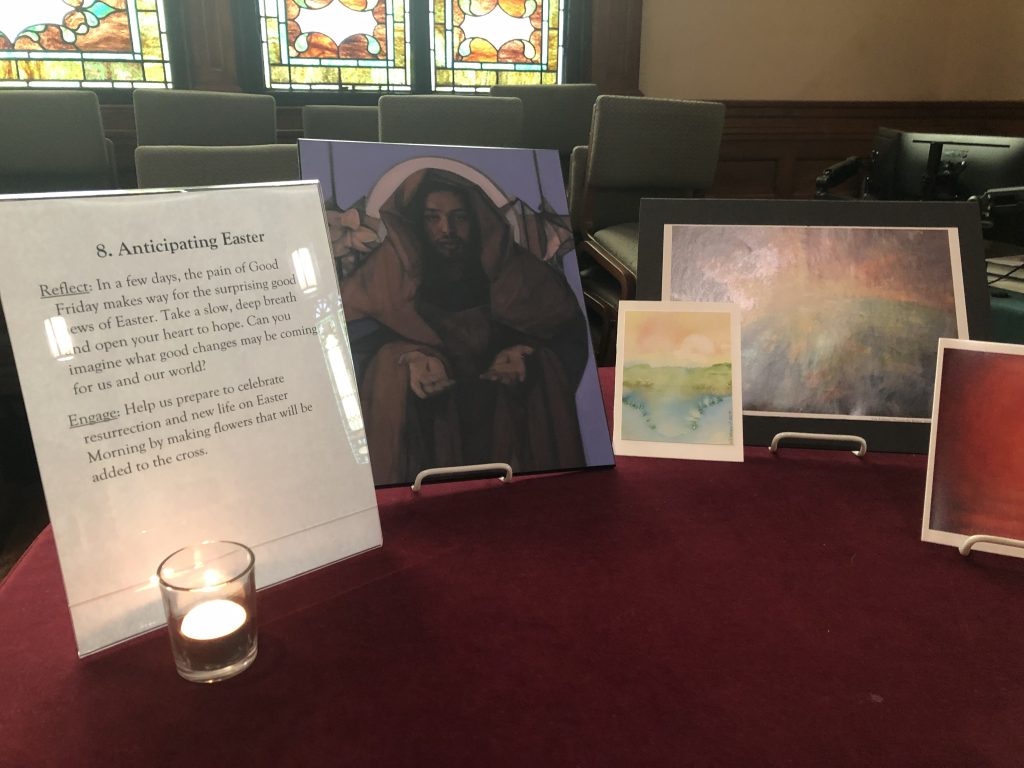
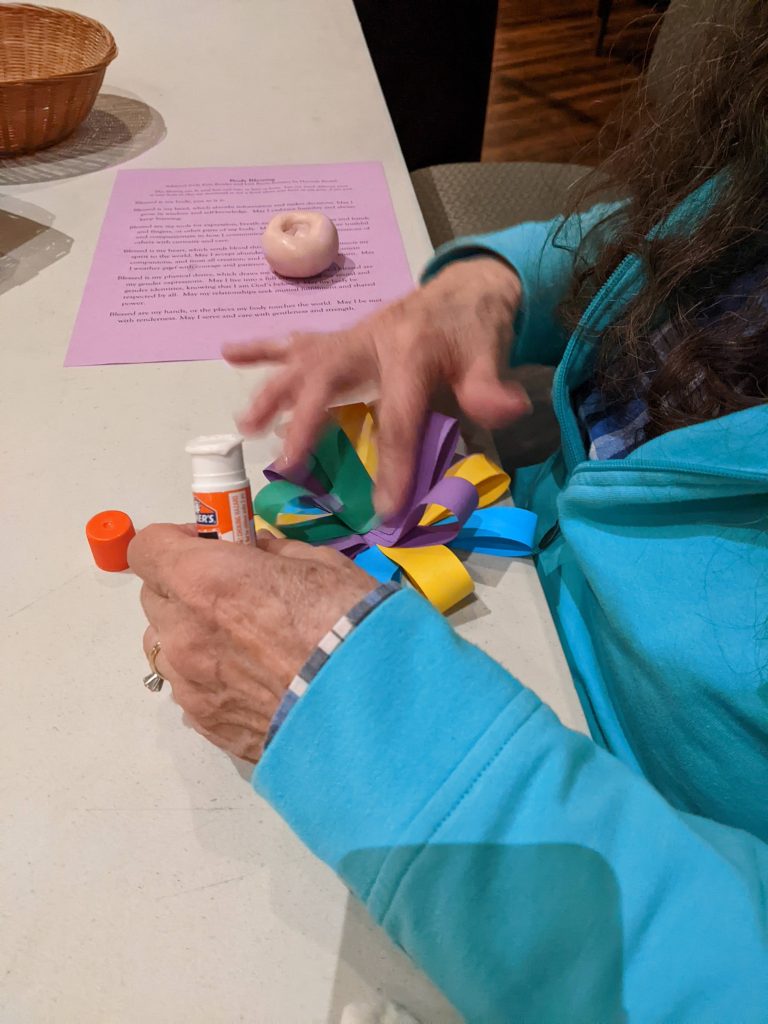
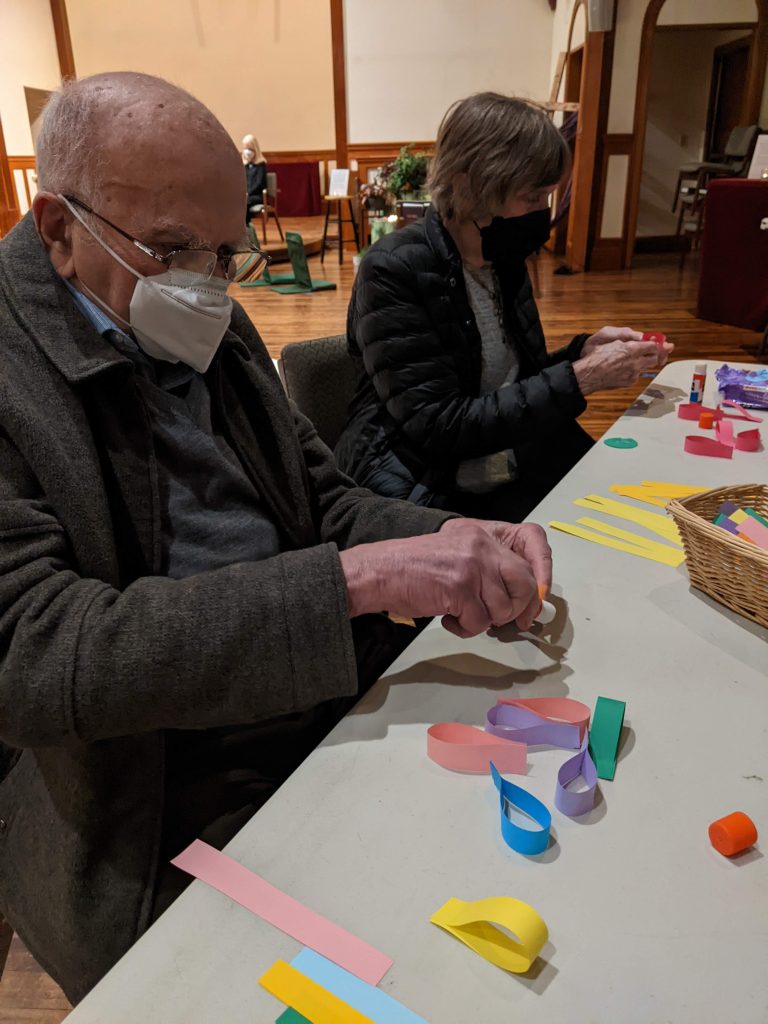
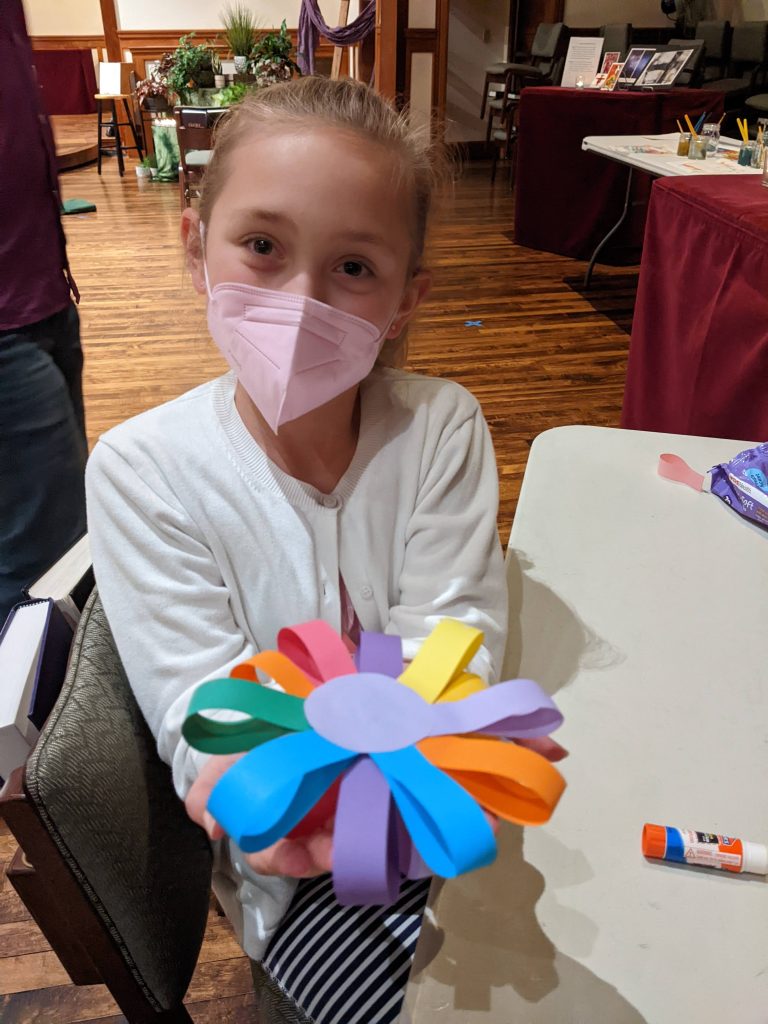
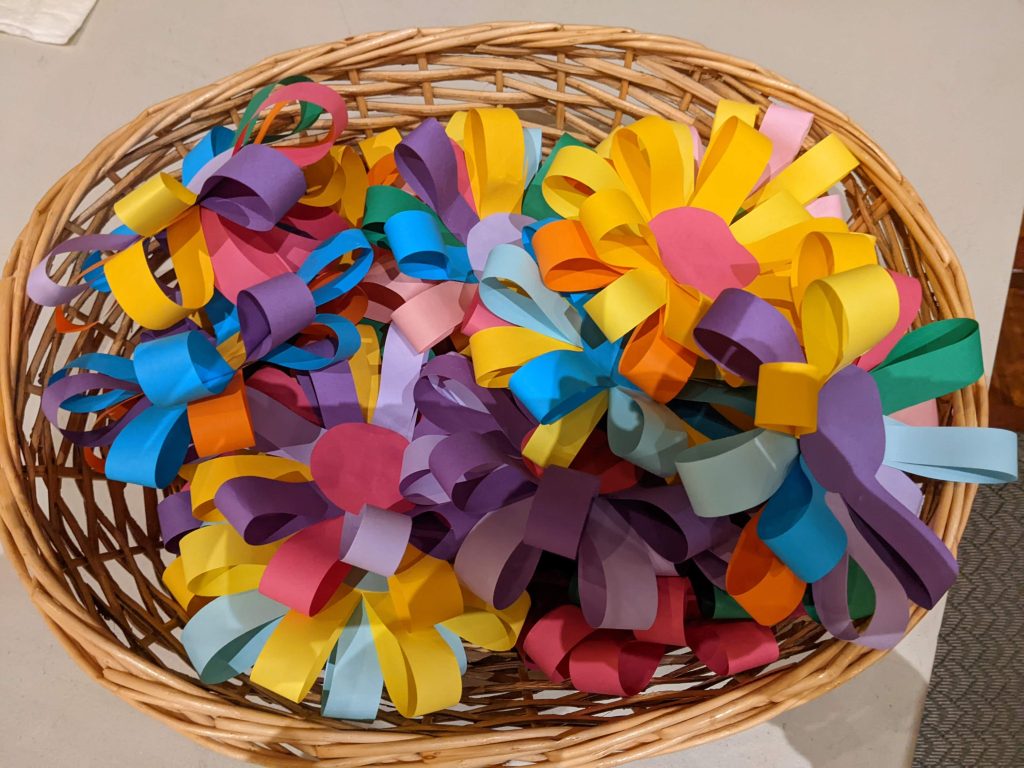
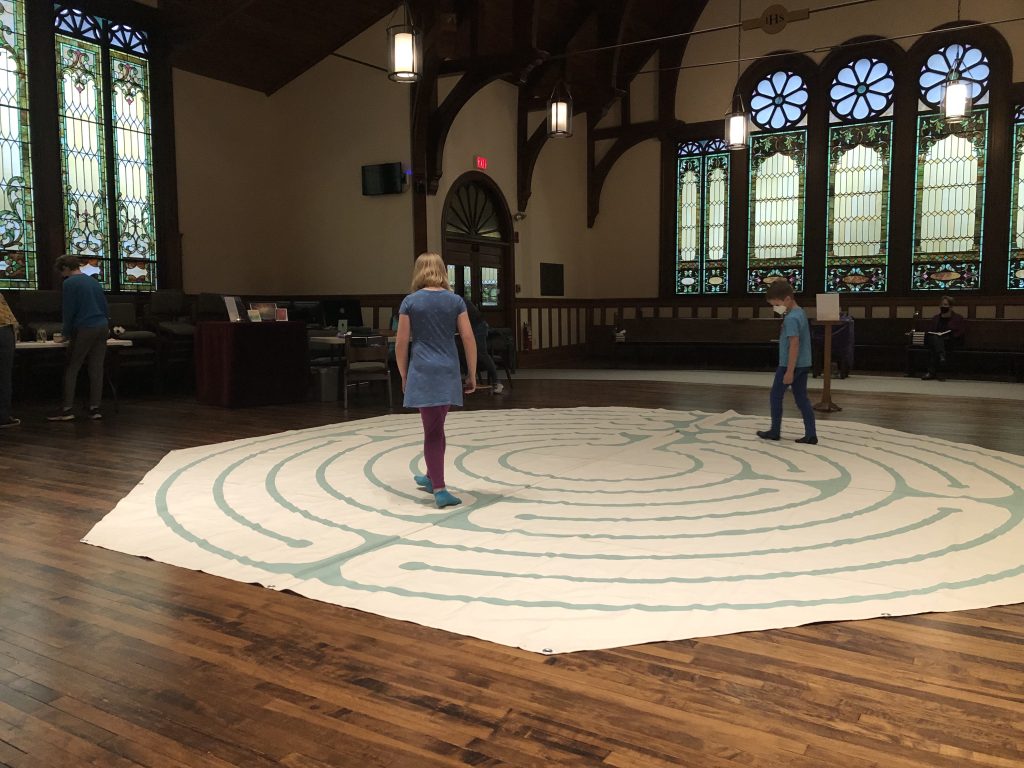
John 20:1-18
How did she come to believe?
We don’t know much about Mary Magdalene. You may have heard stories; most of them aren’t true. Mary Magdalene gets mixed up with all the other Marys in the New Testament, as well as several unnamed women. We don’t know much about Mary Magdalene, but we know a few very important things. She was a follower of Jesus. She suffered from seven demons, which Jesus cast out. She was there when Jesus died, and when the empty tomb was discovered. She was the first preachers of the resurrection and a central leader in the early church.
In this morning’s text, we learn something else: even for her, it was hard to believe.
Mary comes back to the tomb early on the first day of the week, while it is still dark. Her teacher has died, and she wants to be with him. She goes to sit by his grave, but when she arrives, she sees that the stone has been removed from the tomb. Mary does not rejoice. She does not guess what has happened. She cannot even bring herself to investigate. Mary runs to Simon Peter and the disciple whom Jesus loved, and says, “They have taken the Lord out of the tomb, and we do not know where they have laid him.”
Simon Peter and the disciple whom Jesus loved go into the tomb, and look. They see that the body is gone. They see the linen wrappings. The disciple whom Jesus loved believes something – we don’t know what. Both of them return home.
Mary does not rejoice. She does not even ask the other disciples what they have seen, or what they believe. She stays by the tomb, and weeps. Maybe it’s the first time that she has been able to cry. Maybe she has been encased in grief ever since she saw her friend on the cross. But now the tomb is open, and so is she.
Finally, Mary looks into the tomb herself. She discovers two angels in white, sitting where Jesus’ body had been. The angels ask, “Woman, why are you weeping?” But Mary does not rejoice at the sight of angels. She does not even express fear or wonder. She just says, “They have taken away my Lord, and I do not know where they have laid him.”
Then Mary turns, and sees a figure in the garden. It is Jesus, risen from the dead. He says, “Woman, why are you weeping? Whom are you looking for?” But Mary does not rejoice. She does not even recognize him. Thinking he must be the gardener, she says: “Sir, if you have carried him away, tell me where you have laid him, and I will take him away.”
It’s not until Jesus says, “Mary!” that she finally wakes up. It’s not until Mary hears Jesus’ story from his own lips that she begins to believe. Only then does Mary leave the tomb behind, and go to tell the disciples, “I have seen the Lord.”
Some of you may have heard another remarkable story, the story of Matthew Sanford. Matthew was only 13 when his family was in a car accident that left his legs paralyzed. What kept him alive at first, Matthew says, is how much his family needed him to survive. But for years that survival was limited. Matthew decided that in order to cope, he had to separate himself from his past. One life was over: the life that included his childhood, and the use of his legs. Now, he had a new and very different life.
In his new life, Matthew was guided by doctors and therapists who undertook important repairs to his body. He went through operations and rehabilitations, necessary but extremely painful adjustments. He learned that his arms must serve as both arms and legs. He was encouraged to ignore his legs altogether.
Then, about ten years later, something changed. Searching for pain relief, Matthew started to practice yoga. Through his yoga practice, he began to be aware of some sensation in the lower part of his body. It wasn’t that his spinal column had regenerated. His body could not go back. Still, he could feel … something. It was as if, he said, he was making his way across a room in the dark. It wasn’t the same as travelling in the light. He couldn’t see clearly or directly. But he became more and more aware of the texture of the darkness.
Yoga changed everything for Matthew. He realized that the earlier decisions he had made to separate from his past were no longer serving him. He realized that the advice he received to ignore his legs was ultimately misguided. He found a way to reconnect with his childhood memories. He found a way to reconnect with memories of his trauma. He found a way to reconnect with his paralyzed body. The conversation between his mind and his body had been disrupted, he says, but not completely cut off. Now, his body has a new voice. Now it whispers. He has to really listen to hear it; but it’s there.
Matthew has continued to practice yoga. And he has begun to teach. He teaches abled bodied people. He teaches those who need physical modifications. And most recently, he has begun teaching disabled army vets how to move and breathe with greater ease in the bodies they have now.
The message of Easter is hard to understand and to trust. It is often misrepresented. The good news of this morning does not erase the tragedy that came before it. The betrayal of the disciples who denied Jesus, the cowardice of the religious leaders who arrested him, the bloodthirstiness of the crowd that called for his crucifixion, the ultimate immorality of the state that executed him – all of that cannot be undone. Mary and all of Jesus’ followers will always be marked by what they experienced. And Jesus – even Jesus, the great exception, risen from the dead – even Jesus is not the same as he was before. “Do not hold onto me,” he tells Mary. He has left regular human existence behind for something entirely different.
The good news of Easter is not that all past wrongs are erased, but rather that tragedy can occur in our hearts and in our bodies, and yet, through the power of God, we can still rise.
All of us experience at least a little death. The death of loved ones. The death of hopes or dreams for ourselves, or for others. The death of a relationship. The slow or sudden death of our physical abilities. At the time of loss, we may need to make a clean break: before and after. Whole and broken. But resurrection requires connection. Resurrection requires discovering the both/and. Resurrection requires both brutal honesty and an openness to the possibility of joy.
For Mary, it did not happen all at once. She had to go out and find her way while it was still dark. She had to see the open tomb, talk with her friends, cry, speak with angels unaware. Then, finally, she spoke with Jesus himself. He said, “Mary.” He spoke her name in that familiar, beloved voice. And through his gentle presence, and his loving persistence, Mary came to believe that Jesus really was with her in a new way. In time, she would discover that losing him, and finding him again, had changed her so profoundly that she would dedicate the rest of her life to sharing that good news over and over and over again to whoever would listen.
What deaths are you grieving now? Our gospels tell us that death is not the end of the story. Instead, we are invited forward in the dimness of our grief, onwards towards awareness and, ultimately, surrender. If we stop pushing, and start feeling; if we breathe in and out; then, perhaps – when we are ready – we will recognize the voice of Jesus, calling our name, inviting us to believe in new life. Thanks be to God.
Matthew 21:1-11
What kind of a strange parade was this?
On Palm Sunday, many of us who were raised in the church anticipate a festive event. We shout Hosanna, and we wave palms, and we sing “All Glory, Laud, and Honor.” We fold palms into crosses if we have the right kind, or we use our palms to fight one another. Some churches go even farther in their celebrations. A church I served as a student Pastor gets a mariachi band each year and marches through Manhattan with children taking turns riding on the back of a pony. Who doesn’t love a parade? Maybe next year.
These festive celebrations are part of our tradition. But in marking that tradition, we may forget just how strange Jesus’ parade was.
Parades were a familiar event in the Roman Empire. When a military commander led Roman forces to victory, that victory was celebrated with something called a “day of triumph.” The general became a kind of king for a day, wearing a crown of laurel and robes of purple embroidered with gold. He rode in a great chariot led by strong horses on a long route leading into the heart of Rome. Great crowds cheered him on and showed him honor as he passed, followed by his army, marching in formation. When the whole procession finally made it into the city, the general went to the temple of Jupiter to offer sacrifices. There were feasts, and public games. A day of triumph.
Jesus’ parade was… different. He was not a military commander. He had 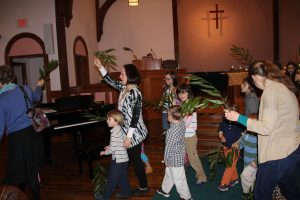 won no victory. And he chose not Rome, but the holy city of Jerusalem as his destination. As far as we know, Jesus didn’t have a special outfit. He didn’t have a chariot, either, or even a horse; he rode on a donkey. Actually, in the gospel of Matthew, which we read this morning, it’s even worse than that – Jesus straddles both a donkey and its colt at the same time, in what must have been an extremely awkward procession. Jesus had no army marching in order behind him, but a ragtag bunch of fishermen and children and tax collectors and scarlet women and people with illnesses and disabilities.
won no victory. And he chose not Rome, but the holy city of Jerusalem as his destination. As far as we know, Jesus didn’t have a special outfit. He didn’t have a chariot, either, or even a horse; he rode on a donkey. Actually, in the gospel of Matthew, which we read this morning, it’s even worse than that – Jesus straddles both a donkey and its colt at the same time, in what must have been an extremely awkward procession. Jesus had no army marching in order behind him, but a ragtag bunch of fishermen and children and tax collectors and scarlet women and people with illnesses and disabilities.
Jesus’ parade can’t have been very grand. But the crowds go crazy anyway. Jesus’ reputation has been growing throughout his short ministry. The people who have come all the way to Jerusalem to mark the feast of Passover are thrilled that this celebrity Rabbi is joining them. So they show him honor, throwing branches and cloaks into the street to make a kind of red carpet. People go ahead of him, and come behind him, waving palms and shouting “Hosanna to the Son of David! Blessed is the one who comes in the name of the Lord!
Jesus is king for a day – king of the Jews. But not everyone is prepared to celebrate. Our gospel tells us, “When Jesus entered Jerusalem, the whole city was in turmoil, asking, “Who is this?””
In so much of what he does, Jesus challenges us. He teaches with stories that contradict our common sense. He teaches with questions that disturb our equilibrium. Only rarely does he come out and give an actual instruction, and then, the results are similarly jarring: Let the children come to me. Go, and sell everything you have. Love your enemies, and bless those who curse you.
In the events of Holy Week, we see Jesus teaching again, using a different medium. This time, Jesus teaches through what you could call performance art, or street theater, or civil disobedience, or non-violent resistance. He brings his disruptive presence right into the heart of religious and political power and refuses to be anyone other than exactly who God has called him to be.
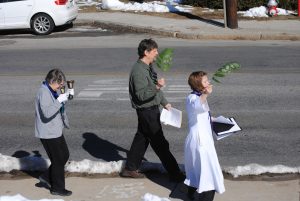 Palm Sunday is a day of triumph, in a sense. But many of those who shout with joy on this day turn to silence, or even condemnation, by the end of the week. By then, Jesus has disappointed everyone. He has shown that he is too peaceful to lead a military movement; too unpredictable to bolster the religious establishment; too powerful to be ignored by the colonial overlords. And so, by Friday, instead of public games, there is a public spectacle. The crowd demands his crucifixion, and watches as it is carried out.
Palm Sunday is a day of triumph, in a sense. But many of those who shout with joy on this day turn to silence, or even condemnation, by the end of the week. By then, Jesus has disappointed everyone. He has shown that he is too peaceful to lead a military movement; too unpredictable to bolster the religious establishment; too powerful to be ignored by the colonial overlords. And so, by Friday, instead of public games, there is a public spectacle. The crowd demands his crucifixion, and watches as it is carried out.
Holy week starts with one kind of triumph, and ends with a very different one on Easter morning. But none of it makes sense unless we pay attention what Jesus is teaching us, and walk with him through the middle passage. None of it has meaning unless we consider the resonance of the whole story in today’s events, and in our own lives.
Let’s notice, then, the strangeness of this parade, and all that comes afterwards. Let’s journey into this week with Jesus, to learn from his final teaching.
On Thursday evening, March 24th, children, youth, and adults gathered together for a soup supper, foot washing, Communion, and a variety of interactive prayer stations as we remembered Jesus’ Last Supper and his final mandate to his disciples before his arrest and death. Our prayer stations included an indoor Garden of Gethsemane with prayer candles, beautiful displays of different images of Jesus, a bare cross with stones for prayers of unburdening, forgiveness sand for writing and smoothing away, an interactive coloring poster, recreating the scene of the Last Supper with blocks, tiles, and figures, a variety of fragrant perfumes to remind us of Mary’s anointing of Jesus, and a meditative labyrinth walk. Please enjoy taking a picture-walk through our evening together on Maundy Thursday as you browse the photos.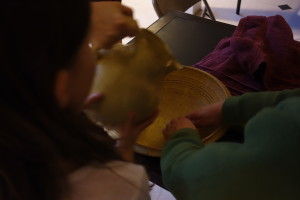
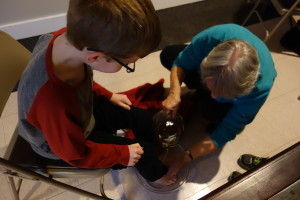
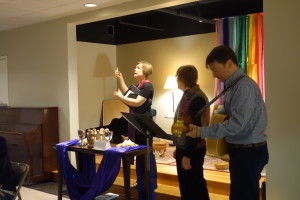
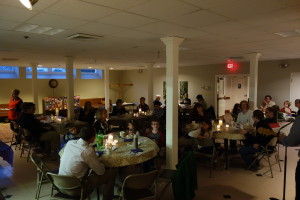
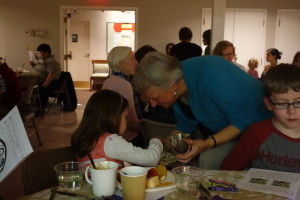
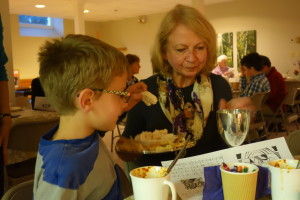
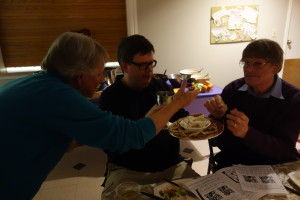
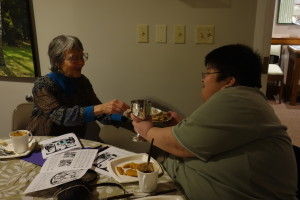
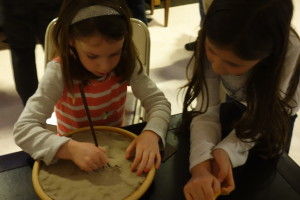
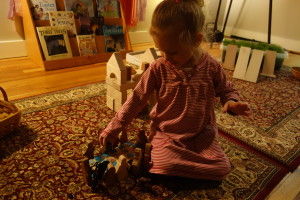
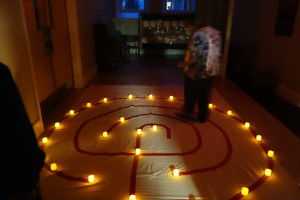
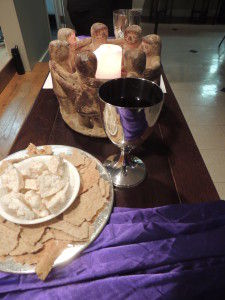
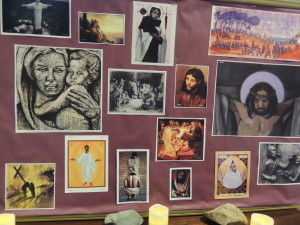
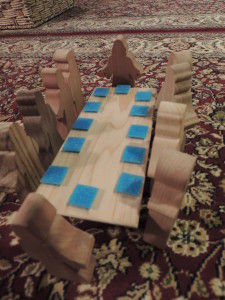
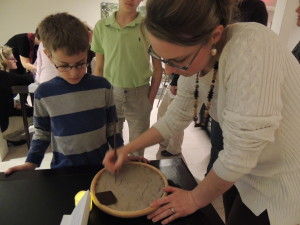
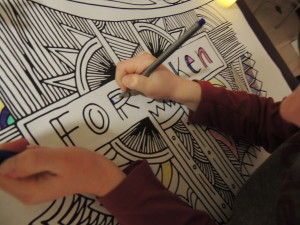
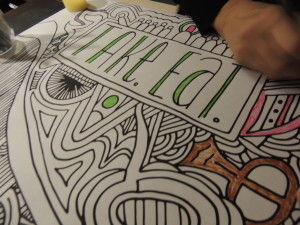
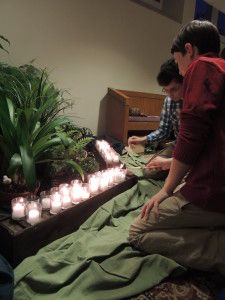

Over the course of four Sundays during Lent, our Multiage class explored the dramatic events of Holy Week by reconstructing the city of Jerusalem during Jesus’ time. From Palm Sunday to the Resurrection, the children followed Jesus’ path through the city and learned through Gospel, images, video, and story how Jesus spent his final days teaching, preaching, dying, and living again. By studying a variety of images, as well as researching online, through videos, and in books, the children began to form a solid impression of what Jerusalem may have looked like more than 2000 years ago, as well as what the city looks like today. This entire process, although messy and busy and occasionally frustrating (our Temple fell down four times!), was a wonderful way for our children to begin to understand and make sense of the events of Holy Week while being engaged in true hands-on learning!
As we constructed, we wondered:
Why did the people love Jesus on Palm Sunday, and then hate him five days later?
Why is it called “Good” Friday?
What happened to the disciples after Jesus was arrested? Where did they go?
Was Judas evil?
What does the inside of Jesus’ tomb look like?
The light of Christ, transforming the sanctuary for Easter, renewal of baptism and communion!